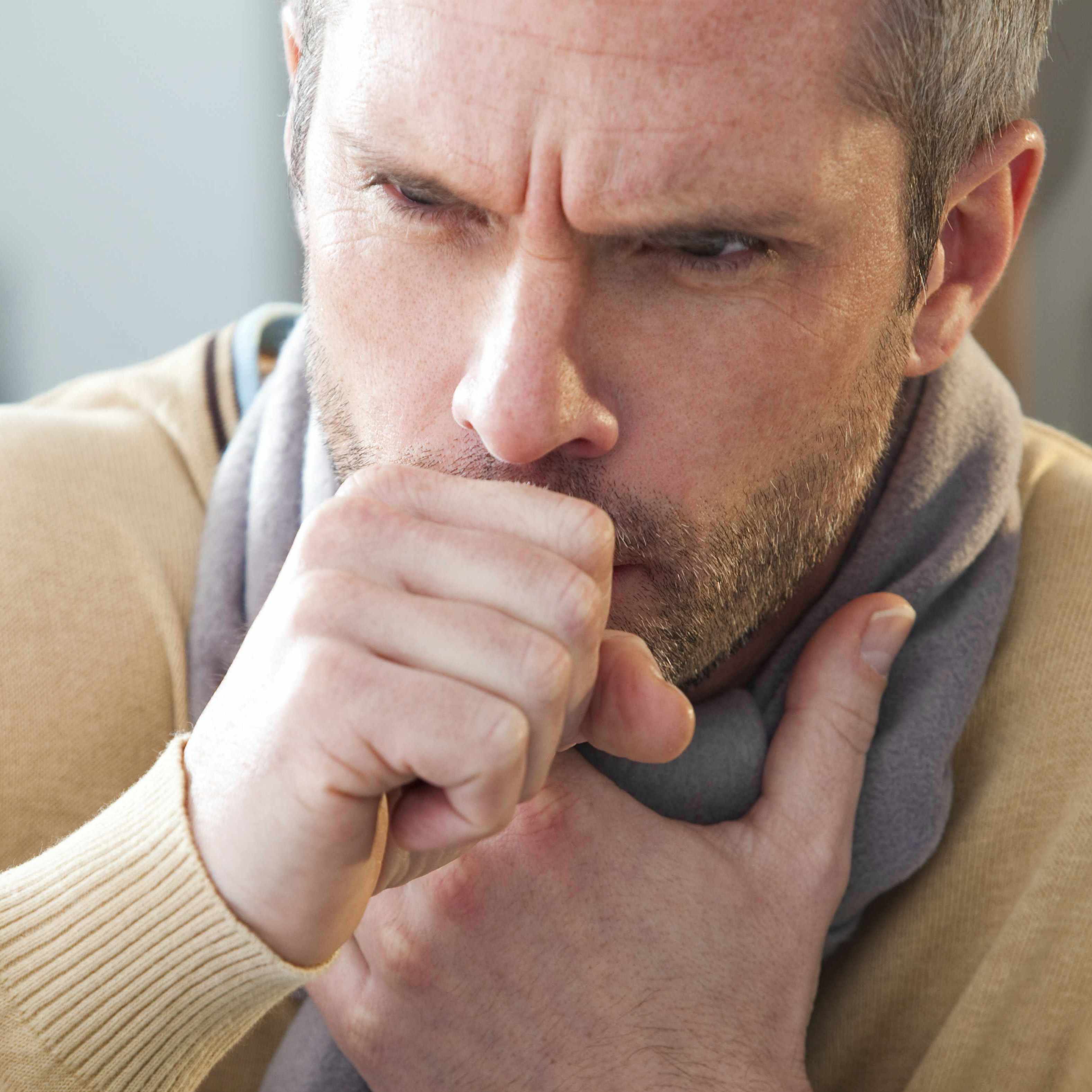On Saturday, March 14, in southwest Wisconsin, a woman was working in her yard, raking and clearing the first spring weeds. She coughed a bit during the day, and felt some achiness in her lower back, some fatigue. It was in the high 30s that day, but she was warm when she came into the house. She was oddly tired. The next day, Sunday, the woman, Kari Houser, and her husband compared symptoms. They matched but that didn’t stop them from filling half a dozen buckets of leaves and sticks before calling it a day. By Monday, they both felt fine. Kari’s college-age daughter and her friend felt similarly bad a few days later but her high-school-age son never felt ill at all.
That was COVID-19 for Kari and her family. She was one of the first in her area to test positive for COVID-19, to recover, and to donate plasma to help patients who have a life-threatening response to the virus, SARS-CoV-2. Risk factors aside, it’s a roll of the dice how each person’s immune system will respond to this new virus. But history shows that convalescent plasma might tilt the odds in our favor. Many who have recovered can help.
Convalescent Plasma
Plasma is one part of blood, along with red blood cells and platelets. According to Camille van Buskirk, M.D., medical director of Mayo’s Blood Donor Program, plasma has many uses.
“In medical emergencies with massive blood loss, patients undergo blood transfusion as a life-saving treatment and plasma is one of the blood products typically transfused,” she explains. “It can be used to replace blood clotting factors depleted by massive bleeding, those clotting factors inhibited by some types of medication, or other instances when these clotting factors are absent, as in certain inherited blood clotting disorders.”

It can also be used as replacement fluid during a treatment known as therapeutic plasma exchange, or apheresis. This treatment is used in patients whose plasma may contain disease-causing substances, such as cell- or tissue-specific antibodies, which may cause certain types of autoimmune diseases or other illnesses. While platelets help blood to clot, and red blood cells carry oxygen, plasma carries important proteins created by the immune system called antibodies. But antibodies are created by the body in response to a disease, meaning each of us exposed to the same diseases have created basically the same antibodies independently. Collecting plasma from a recovered person and giving it to someone who is seriously ill is a shortcut.
It’s still unclear how much, if at all, plasma helps patients. The practice does have a rich history, but no randomized controlled trials for surety. A new publication suggests at the very least, it does no harm, and in some patients who receive the plasma, “there is evidence that virus levels in the blood are reduced or eliminated,” says Michael Joyner, M.D., the Mayo Clinic Frank R. and Shari Caywood Professor, who leads the national Expanded Access Program for convalescent plasma at Mayo Clinic. From Kari’s perspective, it was just like giving blood.
“If anyone has donated blood, the process really looks the same from the donor’s perspective,” Kari says. “You go through all the screening process that you would normally have, the same questions.”
Donating
The first question many people have is, “I didn’t go to the doctor but I’m pretty sure I had COVID-19, so can I donate plasma?” The answer is always evolving so your best bet is to go to the Expanded Access Program site (www.uscovidplasma.org/donate) and see the latest recommendations. Basically, you need to be symptom free for 14 to 28 days depending on where you donate and you may need a negative PCR test result for COVID-19. The other standard blood donation requirements apply, too.
“First, donors must be at least 18 years old and weigh a minimum of 110 pounds,” says Dr. van Buskirk. Each donor is asked medical questions related to chronic illness, travel, medicines, and risk of infections. They also will have blood pressure, temperature and pulse checks, as well as a finger stick blood draw for hemoglobin. Donors can also expect laboratory testing for various transfusion transmitted infectious agents, as required by the Food and Drug Administration, which regulates blood donor centers.

As an “early donor,” Kari navigated a nationwide effort at the same time as the people setting it up. What documentation was needed to donate? Who was eligible? Where should they go to donate? Kari knew from her extensive reading that until effective treatments were identified, the world needs every single person who has recovered from COVID-19. But lack of testing created many hurdles, and the unknowns around SARS-CoV-2 created delays.
With testing becoming more available, some of these challenges will subside. For those who can get the testing, they’ve made it through the first hurdle. If they don’t have any factors that disqualify them from donating, they’ve passed the second hurdle. Many have fears of blood donation and needles but are working on managing those fears in order to contribute. But if they persevere, a recovered COVID-19 patient can donate based on their blood volume, which translates back to weight.
“For example, a 130 pound donor could donate up to 625 milliliter (mL) per donation, while a 175 pound donor could donate up to 800 mL per donation,” says Dr. van Buskirk. That’s about 2.5 and 3 cups of plasma for the lighter and heavier donor, respectively. Studies on the use of convalescent plasma report doses of 200 mL to 400 mL in total, meaning that one donor might be able to provide three or four doses of plasma with each donation.
Research Questions Remain
When Kari was diagnosed, she ratcheted into crisis mode.
“My immediate thought was where have we been and who have we been in contact with,” she says. Those were the same questions she answered for the county health workers and for her employer, Mayo Clinic, her husband’s employer, their friends and family.
“It is a very invasive experience,” she says. “And they really didn’t know how long we were going to be formally isolated. It was very different, psychologically, from self-isolating, to be told you can’t leave your home until the state tells you you can.”
During the time they were at home, Kari read all she could about COVID-19 and the pandemic. About five days before their quarantine ended she saw a news article about convalescent plasma. After doing some digging she got a link from a coworker that included Dr. Joyner’s name.
“I decided just to email him and ask to be pointed in the right direction,” Kari says. “And he called me right back, on his personal cell phone.”

Dr. Joyner has received hundreds, if not thousands of personal emails and calls from people wanting to donate. It’s a testament to humanity that despite so many unanswered questions about convalescent plasma, people nationwide are trying to donate. Some of the questions they are helping answer are:
- Does plasma actually help those who are seriously ill, or at risk for becoming seriously ill, recover?
- What level of antibodies in the blood of the donor is required for a supportive response in an ill patient?
- How much plasma is needed for an average patient?
- How does donation affect the duration of immunity for donors?
These questions are being investigated by researchers all over the world, while at the same time, according to Dr. Joyner, facilities are trying to build up stores of convalescent plasma to use until a solid therapy is identified. It’s a huge call to action for humanity, and since the duration for immunity is unclear, the call must be answered now. Despite the hurdles, Kari plans to donate again.
“I want to encourage people to do this,” Kari says. “There’s so much that’s outside of our control with this virus and this pandemic. It’s affecting everybody’s lives in ways not even related to disease. Anything we can control and we can do to make a difference, we should try to do.”

— Sara Tiner, May 22, 2020
Want more information? To read more about convalescent plasma go to, "Convalescent Plasma: A Therapy for COVID-19?"







